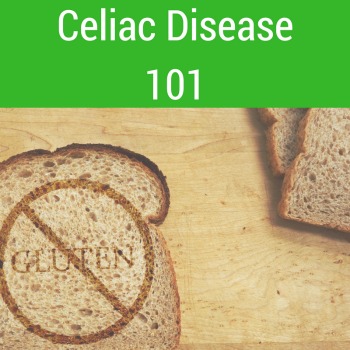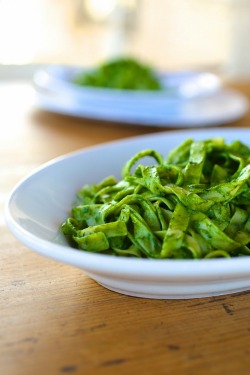Going “gluten-free” is a popular diet trend that is not expected to slow down. However, for people with celiac disease, being gluten-free is much more than a diet fad or new trend; eating gluten-free is essential to their health and survival.
In the United States, it is estimated that just over 3 million people have been diagnosed with celiac disease, and nearly 21 million people are sensitive or allergic to gluten. Of the 3 million people who have celiac disease, only 5% know they have it.
This issue is dedicated to helping you better understand celiac disease, recognize the signs and symptoms, and know what to eat (or not eat) if you or a loved one has celiac disease.
|
|
|
Celiac Disease 101
|
 What Is Celiac Disease: Celiac disease is a genetic autoimmune disorder that affects the small intestine. When a person with celiac disease consumes gluten (a protein found in wheat, rye, and barley), their immune system responds by attacking their small intestine. These “attacks” damage the lining of the small intestine and inhibit absorption of essential nutrients, while also causing both physical and psychological discomfort. What Is Celiac Disease: Celiac disease is a genetic autoimmune disorder that affects the small intestine. When a person with celiac disease consumes gluten (a protein found in wheat, rye, and barley), their immune system responds by attacking their small intestine. These “attacks” damage the lining of the small intestine and inhibit absorption of essential nutrients, while also causing both physical and psychological discomfort.
Who Is At Risk for Celiac Disease: Celiac disease is a genetic disorder, meaning that it runs in the family. If someone in your immediate family has celiac disease (whether it is a parent, child, or sibling), there is a 1 in 10 chance of you also developing celiac disease.
Risk for Undiagnosed Celiac Disease: According to the Celiac Disease Foundation, if left untreated, celiac disease can lead to more serious health conditions, including:
- Iron deficiency anemia
- Early onset osteoporosis or osteopenia
- Infertility and miscarriage
- Lactose intolerance
- Vitamin and mineral deficiencies
- Central and peripheral nervous system disorders
- Pancreatic insufficiency
- Intestinal lymphomas and other GI cancers (malignancies)
- Gallbladder malfunction
- Neurological manifestations, including ataxia, epileptic seizures, dementia, migraine, neuropathy, myopathy, and multifocal leucoencephalopathy
Signs and Symptoms: According to research from the World Gastroenterology Organization, there are two main types of celiac disease: “classical” and “non-classical.” In the classical version, patients will exhibit the normal signs and symptoms, including malabsorption, diarrhea, and excessive weight loss. In children, it can also cause growth failure.
In the non-classical version, patients usually have no clear signs of having celiac disease, but may begin to suffer mild gastrointestinal problems; have chronic fatigue and migraines; and start showing vitamin deficiencies, skin rashes, and even depression.
If you are concerned that either you or your loved one has celiac disease, speak with a physician who specializes in celiac testing.
Treatment: Currently, the only treatment for celiac disease is a strict gluten-free diet. People with celiac disease must avoid foods with wheat, rye, and barley. For some, ingesting even small amounts of gluten can trigger severe intestinal damage.
During Celiac Awareness Month, you can do your part to raise awareness about this disease by sharing this newsletter with your friends and family.
|
|
|
What is Gluten, and Where is it Found?
|
 Gluten can be found in many types of foods, even ones that would not be expected. The grains that contain gluten are wheat, barley, and rye. Gluten can be found in many types of foods, even ones that would not be expected. The grains that contain gluten are wheat, barley, and rye.
Wheat is commonly found in:
- Breads
- Baked goods
- Soups
- Pasta
- Cereals
- Sauces
- Salad dressings
- Roux
Barley is commonly found in:
- Malt (malted barley flour, malted milk and milkshakes, malt extract, malt syrup, malt flavoring, malt vinegar)
- Food coloring
- Soups
- Beer
- Brewer’s Yeast
Rye is commonly found in:
- Rye bread, such as pumpernickel
- Rye beer
- Cereals
While eliminating foods that contain gluten may seem difficult, we can work together to formulate a plan that fuels and empowers you to feel and live well!
|
|
Featured Recipe
4 Ingredient Kale Pesto Tagliatelle
|
 Recipe by: jovial Foods Recipe by: jovial Foods
Ingredients:
- 6 ounces or 1 bunch Kale leaves, stripped of stems
- 3 tablespoons jovial extra virgin olive oil
- 1 clove garlic , minced
- ¼ teaspoon fine sea salt, plus more for cooking the pasta
- 12 oz. box of jovial Gluten Free Brown Rice Tagliatelle or your favorite jovial pasta
Instructions:
Bring 4 quarts of water in a large stockpot to a rolling boil. Add 1 tablespoon of salt to the water, or to taste. Drop in the kale, and cook for 3 minutes to soften the leaves. Lift the kale out of the pot with a slotted spoon, and place in a colander to cool. Add the pasta to the kale cooking water, and cook according to instructions. While the pasta is cooking, add the olive oil, garlic, and salt to the bowl of a food processor or blender. Add the kale and pulse to chop as finely as you can. Remove ¼ cup of pasta cooking water and add it to the blender. Process until the pesto is fine, adding 1 tablespoon of cooking water at a time, only if needed. Drain pasta, toss with enough pesto to cover the pasta, and serve. Store remaining pesto in a sealed container in the refrigerator for up to 4 days.
Additional Tips:
Of course, you can add nuts and grated cheese to the pesto, if you like. For this amount of pesto, you would add 1 tablespoon of pine nuts or 2 tablespoons of walnuts, plus ½ cup of grated Pecorino Romano cheese.
|
|
|
Be Inspired
|
|
“After I was diagnosed with celiac disease, I said yes to food, with great enthusiasm...I vowed to taste everything I could eat, rather than focusing on what I could not.” ― Shauna James Ahern
|
|
|
About SO Nutrition
|
 Stephanie Leipprandt Ouellette, MBA, RDN, LD
Stephanie Leipprandt Ouellette, MBA, RDN, LD Stephanie has been working in the field of nutrition and dietetics since 1995. She earned a Bachelor of Science degree in Dietetics from Michigan State University, completed an Approved Pre-Professional Practice Program at Western Michigan University and earned a Master of Business Administration from Baker College. She’s been a Registered Dietitian Nutritionist since 1996 and licensed in Texas since 2007. In 2008, Stephanie earned her certification in Childhood and Adolescent Weight Management. Stephanie has extensive clinical & managerial experience, both in corporate settings and in the community. Now she wants to share her knowledge with you, because most (if not all) nutritional habits begin at home.
Stephanie and her family reside in Katy, Texas
|
|
| |
Copyright © 2022 Customized Nutrition Newsletters, All rights reserved.
|
|
| |
|
|